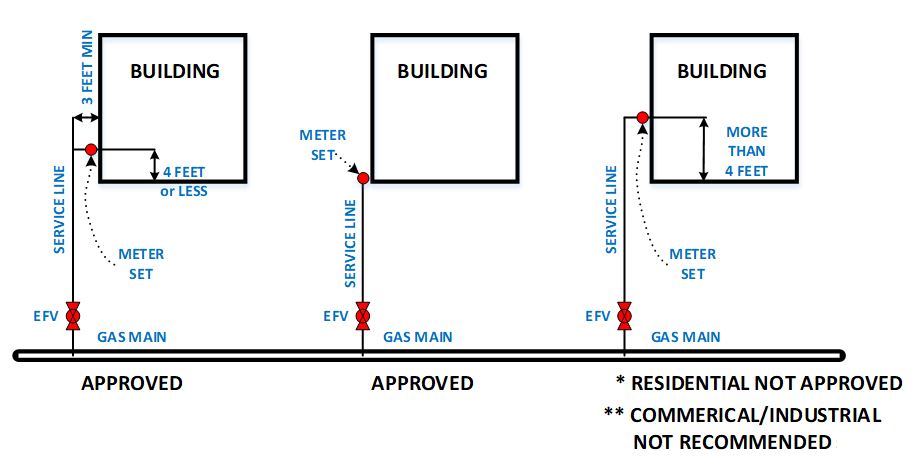Natural gas construction request
Planning and costs
We will use your construction request to prepare a cost estimate. If the construction site is not near distribution lines, the estimate will include the cost to extend distribution lines to your site.
One of our representatives may need to meet you at the site to gather additional information. We will contact you after we've completed the estimate to discuss the plan and any costs you'll be responsible for.
If you are required to pay any construction costs, we'll need a signed construction agreement and full payment before we can proceed. You also may be required to furnish right-of-way easements necessary to install the electric distribution line extension and service.
Inspection and permits
All service lines must be pressure-tested before use. The contractor or property owner is responsible for arranging the pressure test in accordance with applicable national, state and local codes for installation of natural gas systems.
You must install all customer piping, vents and related materials in accordance with federal, state and local codes.
You may be required to obtain a permit and or have your appliances and piping inspected before we can set a meter and turn on natural gas. Please refer to local regulations for your specific area.
Natural gas metering standards
Meters are normally placed outside and must be readily accessible and protected from corrosion. Other requirements, such as location on the property, distance from windows and ignition sources, are determined by local, state or national code and strictly enforced. Contact your local inspector or Black Hills Energy at 888-890-5554 for details.
Service line placement
To ensure natural gas service to your homes is safe and reliable, service lines must be installed according to certain procedures. The requirements listed below and the diagram illustrate the correct service line placement.
- A service line may run parallel to a building wall, but must be at least three feet from the building foundation.
- The service line should not parallel the building itself for more than a distance of four feet.
- A service line that parallels a building must then approach the meter set at a 90-degree angle to the building.
- If there is an obstruction, and/or potential code violation such as a window, vent, electrical or lot line, which won’t allow a service line to be ran to this specification, please contact your local Black Hills Energy utility construction planner.
